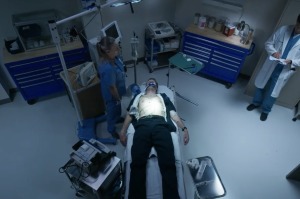'Brother of Jesus' Burial Box Still a Mystery After Court Decision
Mystery continues to surround an ancient burial box that is inscribed with the words, "James son of Joseph, brother of Jesus," after a Jerusalem court found Oded Golan, a private collector of antiquities, not guilty of forging the inscription.
The court said the 2000-year-old box will probably "continue to be investigated in the archaeological and scientific arena, and time will tell," according to a report from Reuters. The court's decision puts an end to a legal battle that began in 2004 when Golan was indicted.
"I am glad that I was found innocent of all the very serious allegations that I had to face during the last seven years," Golan told Reuters after he was acquitted by Judge Aharon Farkash of the Jerusalem District Court. Though he was acquitted of forgery charges, he was found guilty of other charges relating to antiquities law.
Golan allegedly obtained the box, which is being called the "James ossuary," along with an ancient tablet that describes renovations done to the first biblical temple by King Jehoash, from Arab traders in East Jerusalem about a decade ago.
The inscription on the burial box has a great deal of significance to many groups, if indeed it refers to Jesus Christ. The biblical books of Matthew, Mark and Galatians all refer to James as the brother of Jesus, although Roman Catholics and other groups say Jesus had no brothers or sisters. If authentic, the ossuary could be considered one of the most concrete evidences of Jesus Christ's life ever discovered.
Two committees from the Israel Antiquities Authority (IAA), which oversees all of the nation's archaeological happenings (including excavation, preservation and conservation of antiquities), said in 2003 that the ossuary was genuine but the inscriptions were forged. Some believed Golan created a forgery to make money, and the IAA suggested that the state should investigate him.
Following the court's decision on Wednesday, the IAA released a statement saying they respect the judge's decision and is "proud of the State's determination in looking out for the broad public interest in the country and abroad, which states it is forbidden to meddle in the history of the peoples that lived and live in the Land of Israel."
"During the trial the judge was presented with the conclusions of an expert committee of the Israel Antiquities Authority and the universities, which unequivocally established that the finds are forgeries," the statement from the IAA also says. "The court had to decide professional issues in the field of archaeology, which are not frequently heard in a court of law. Because a person's guilt must be proved beyond a reasonable doubt in a criminal trial, Golan was acquitted."
Hershel Shanks, the founder of the Biblical Archaeology Society and editor of the Biblical Archaeology Review, posted an article to the Bible History Daily website following the verdict to explain why he disagrees with the IAA and thinks the inscription is legitimate.
Shanks argues that the IAA committees were "set-ups" to find the items to be forgeries, accusing the authority of stacking the committees with experts who already had speculated that the artifacts were forged. He also provides thorough scientific explanations as to why he thinks the artifacts may be the real thing.
"Despite all that I have said, the inscriptions I have discussed will be considered forgeries in the public mind for at least a generation-never mind the acquittal of the defendants and the evidence of authenticity," said Shanks.





























